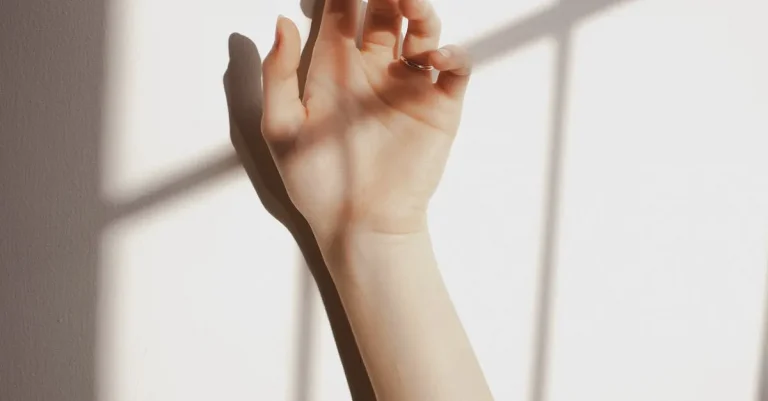Leonardo da Vinci’s drawing of the Vitruvian Man is one of the most iconic images in art history. The image depicts a nude male figure with arms and legs outstretched inside both a square and a circle. At first glance, it appears to be a study of ideal human proportions.
However, the Vitruvian Man carries deeper symbolic meaning relating to spiritual concepts.
If you’re short on time, here’s the essence of the spiritual significance behind the Vitruvian Man: At its core, this famous drawing by Leonardo da Vinci represents the metaphysical belief in the divine geometric perfection and cosmic order of the human body and spirit.
History and Context Behind the Creation of the Vitruvian Man
Marcus Vitruvius Pollio and De architectura
The origins of the Vitruvian Man can be traced back to the 1st century BC Roman author Marcus Vitruvius Pollio and his treatise De architectura (On Architecture). This influential text provided an overview of classical architecture and engineering, touching on geometry, proportions, and the human body.
Vitruvius believed that the ideal human proportions could be determined from the perfect geometric forms and applied to architecture for balance and harmony.
Leonardo da Vinci’s Interest in Proportion
Nearly 1500 years later, the notebook sketches of Leonardo da Vinci (1452-1519) revealed a deep fascination with geometry and proportion. Leonardo studied architecture and filled his journals with drawings exploring the ratios of the human body.
He was inspired by the writings of Vitruvius on the connection between the ideal human form and perfect geometric shapes.
Around 1490 CE, Leonardo put pencil to paper to illustrate this concept by drawing a male figure in two superimposed positions with arms and legs outstretched inside both a square and a circle. This image known as the Vitruvian Man brilliantly brought Vitruvius’ esoteric theories on proportion and the human body to life as a scientific drawing and artistic masterpiece.
The Drawing Process and Geometry
Leonardo used his deep understanding of geometry, anatomy, and botany to create the Vitruvian Man. He positioned the figure inside a square and circle, with the figure’s navel at the center. The outstretched arms and legs touch the edges of the square while the hands and feet touch the circumference of the circle.
His precise calculations use the Pythagorean theorem and geometric ratios to achieve perfect proportions.
The drawing integrates concepts of art and science that were of great interest during the Renaissance. As an emblem of Leonardo’s versatile genius spanning art, anatomy, engineering and other fields, the Vitruvian Man remains an iconic work of art analyzed even today for its powerful visual impact and rich historical legacy.
Symbolic Meaning of the Circle and Square
Circle as Divine Perfection
In Renaissance iconography, the circle frequently symbolized perfection, eternity, and the divine. By enclosing the human figure within a circle, da Vinci establishes a core theme of Vitruvian Man – the symbolic resonance between the ideal human form and the perfection of the cosmos.
The circle has no beginning or end, seamlessly enclosing all within its curved circumference. This echoes philosophical and religious concepts of God as an eternal, all-encompassing force underlying existence.
By linking the human body with this shape, da Vinci poetically suggests that human perfection partakes of divine order.
Square Representing Earthly Realm
In contrast to the celestial circle, da Vinci inscribes the human form within a square, evoking Platonic and Christian symbolism of the earthly realm. The square’s firm outlines and angular geometry reflect the material world’s imperfections when compared to divine perfection.
Yet Vitruvian Man unifies circle and square – spirit and matter intertwined. This reflects da Vinci’s belief that the human being bridges heaven and earth, with an immortal soul housed inside a mortal body.
The square anchors Vitruvian Man to earthly reality while the circle exalts the divine spark within.
Unifying Heaven and Earth
Ultimately, the coexistence and overlap between circle and square expresses da Vinci’s deep fascination with proportions and sacred geometry. He sought to unveil the geometric structures undergirding creation by unifying shapes and concepts with symbolic connotations.
In interlocking circle and square, perhaps da Vinci also hints at his own ambitions – to bridge seemingly disparate realms of art and science, emotion and reason, imagination and engineering. Much like Vitruvian Man himself, da Vinci transcended apparent dichotomies by integrating opposites into imaginative new wholes.
The Human Body as Microcosm
Vitruvian Man as Analog for Cosmos
Leonardo da Vinci’s drawing of the Vitruvian Man is a powerful symbol of the belief in the human body as a reflection of the wider cosmos. The proportions and geometry embodied in the famous image represent the Renaissance genius’ attempt to bring together concepts of art and science in visualizing the human form as a microcosm of the universal order and harmony.
As the Roman architect Vitruvius originally described, the ideal human body fits perfectly inside both the circle and the square. These are symbolic shapes relating to Pythagorean thought on the cosmic order unfolding through mathematical precision.
Leonardo brought this ancient idea to life, envisioning a naked male figure striking a resistant yet fluid pose inside the geometric forms.
Beyond mathematical harmony, Leonardo also emphasized philosophical notions of the human condition through this work. The Vitruvian Man’s presence at the intersection of the divine cosmic sphere and earthly material reality speaks to a key Renaissance interest in elevated human potential while being grounded in bodily experience.
Relationship to Platonic and Hermetic Tradition
In line with Platonic philosophy, Leonardo positioned his Vitruvian Man as spanning the gaps between the terrestrial and the eternal realms. The Renaissance revival of Platonism focused on the human being as a conduit between abstract ideals and physical forms, all joined in cosmic unity.
Additionally, the famous drawing tied into Hermetic occult conceptions popular at the time regarding self-realization and the notion of “As above, so below”. This phrase encapsulated the esoteric belief that the stars and heavens are reflected in earthly existence.
So too is the human body seen as a mirror through which the working of the entire cosmos can be understood.
Body as Reflection of Divine Order
Most profoundly, Da Vinci’s Vitruvian Man embodies the view in Renaissance esoteric circles of the human form as the apex of divine creative order. As possibly God’s greatest masterpiece, the dimensions and proportions of the body were believed to demonstrate the presence of harmonic beauty arising from an intelligent cosmic source.
By symbolically aligning the human form with the most abstract theories of balance and perfection, Leonardo elevated the status of human existence to acts as a bridge between mortal concerns and transcendent spiritual meaning woven into the very fabric of the universe.
Interpretations of Gesture and Position
Outstretched Arms and Spiritual Embrace
Da Vinci’s Vitruvian Man stands with arms and legs outstretched in a star shape. This open gesture symbolizes an embrace – one that encompasses not just the viewer, but the whole world. It evokes spiritual ideas of oneness, interconnection, and the divine within each human being.
Some art historians see religious meaning in the Vitruvian Man’s outstretched arms. His stance echoes Christ on the cross – arms reaching out in a gesture of redemptive love. This reflects da Vinci’s belief that the human body houses an eternal soul whose origins and destiny are spiritual.
The Dance and Dynamic Balance
The Vitruvian Man seems almost frozen in a graceful dance – one leg forward, arms wheeling. His weight shifts onto one leg, caught in a moment of dynamic balance. This reflects da Vinci’s interest in movement and anatomy.
Some art historians also see a subtle reference to classical sculptures like the spear-bearer of Polykleitos. The Greek sculpture captured a moment of contrapposto – weight on one leg, hips and shoulders twisting.
Just so, da Vinci’s sketch finds the Vitruvian Man balanced between stillness and motion.
Facing World and Viewer Simultaneously
The Vitruvian Man turns towards both viewer and world at once. His head faces us, meeting our gaze directly. But his body fronts the universe – arms spanning its width, legs set to carry him forth. He encompasses both microcosm and macrocosm – both human and cosmic scales.
Facing two ways at once, da Vinci’s sketch embodies the Renaissance spirit of humanism. Man becomes the nexus point between earth and the heavens – the measure of all things. The Vitruvian Man looks inward to human experience but also lifts his eyes to contemplate the glory of the cosmos.
Legacy and Enduring Mystique
Study of Human Proportion and Movement
Leonardo da Vinci’s Vitruvian Man continues to captivate artists, architects, engineers and scientists interested in the study of human proportion and movement. The drawing has become an iconic representation of the symmetry, harmony and beauty inherent in the human form with its outstretched limbs perfectly inscribed in both the circle and the square (Leonardo da Vinci).
While Leonardo based his famous sketch on the writings of the Roman architect Vitruvius, the drawing’s legacy lies in the mathematical notation Leonardo included with measurements and angles of the human body.
These complex calculations served as an early attempt to blend art and science in the pursuit of understanding human anatomy and biomechanics (British Library).
In the 500+ years since its creation, the Vitruvian Man continues to inspire new research seeking mathematical explanations for elements of human movement and athletic performance. Scientists have used motion capture technology to study gait dynamics and explore concepts like the “golden ratio of human motion” (News Medical).
Clearly, da Vinci’s sketch set the stage for centuries of multidisciplinary investigation into the science behind the symmetry of the human form.
Artists, Mystics and Hidden Symbols
Beyond mathematical study, the Vitruvian Man has also captured the imagination of generations of artists, philosophers and mystics searching for symbolic meaning in the sketch. The symmetry of the outstretched human form has been interpreted as representing spiritual concepts like the balanced nature of humankind and the unification of the earthly and the divine (Bobby Matherne).
Some theorists have pointed to potential hidden symbols, including: the circle representing the divine realm of perfection surrounding the earthly human form at the center; the square representing the earthly realm; each limb aligning with the four seasons or classical elements of fire, air, earth and water.
However, such symbolic interpretations remain speculative as da Vinci left behind no definitive commentary on underlying meaning beyond human proportion (Leonardo da Vinci).
Nonetheless, the enduring allure of the sketch’s hidden symbols has captivated spiritual seekers and esoteric philosophers over the centuries. This allure has kept the Vitruvian Man in the public eye as new generations apply their own meaning in the perpetual quest to unlock the secrets that may or may not be encoded in the lines of da Vinci’s iconic drawing.
Cultural Touchstone Spanning Centuries
Regardless of the potential mathematically-based revelations or secret symbols hidden within, there’s no question that Leonardo da Vinci’s Vitruvian Man has become a cultural touchstone still recognized globally more than 500 years after his death.
Allusions to the famous sketch have appeared across media platforms in everything from films like “The Da Vinci Code” to company logos, popular music and apparel celebrating the symmetry of the human form (MSN).
The enduring cultural imprint of the sketch serves as a testament to the universal nature of the human drive to find meaning, both measured and mystical, in the flesh-and-blood machines we inhabit. Just as Leonardo pioneered an empirical approach to studying human proportion, his drawing also left room for imagination and artistry with the Vitruvian Man standing as one of history’s most compelling meeting points between hard science and poetic symbolism.
Now over 500 years after first setting ink to paper, Leonardo’s Vitruvian Man has emerged as such a universally-recognized representation of humankind that it’s hard to predict a point in the future when the iconic sketch and the intrigue it provokes might begin to fade from the collective cultural consciousness.
Conclusion
Nearly 500 years after its creation, the Vitruvian Man continues to captivate and intrigue us. While on the surface it may seem like a scientific study of ideal human anatomy, the drawing symbolizes so much more.
The fusion of art and mysticism in the Vitruvian Man represents spiritual concepts about the universe, geometry, and mankind’s relationship with the divine order and harmony of creation. Da Vinci’s famous work remains a cultural icon and a window into humanity’s eternal search for meaning in the cosmos and within ourselves.
The next time you see an image of that near-perfect nude spread inside the circle and square, take a closer look. Allow your eyes to contemplate the deeper, philosophical dimensions held within its simply drawn outlines.
Let the Vitruvian Man inspire your imagination, just as he did for a Renaissance genius over half a millennium ago.






